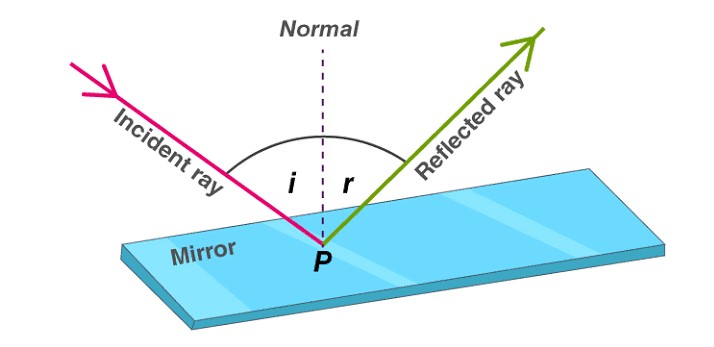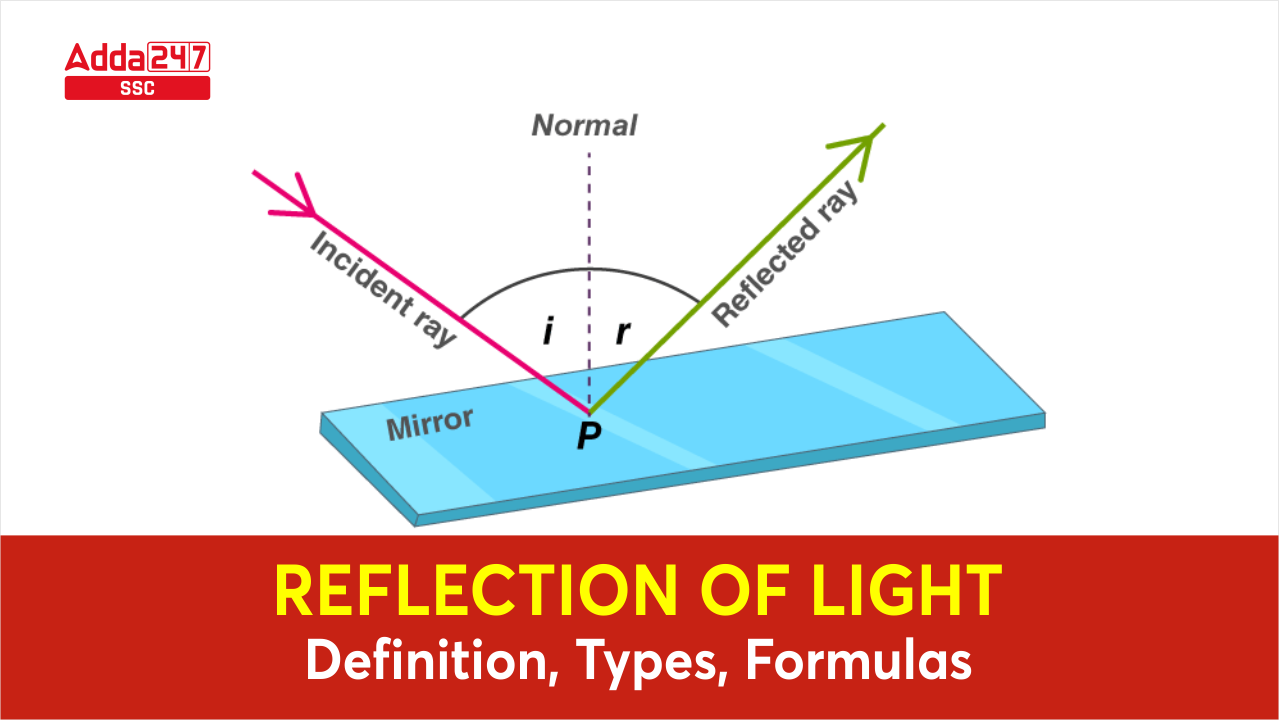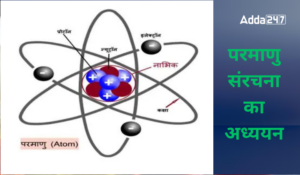Reflection Of Light
A highly polished surface, such as a mirror, reflects most of the light falling on it. The phenomenon of bouncing back of light from a surface is known as the reflection of light. An object reflects light that falls on it. This reflected light, when received by our eyes, enables us to see things. We are able to see through a transparent medium as light is transmitted through it.
Types Of Reflection:
There are two types of reflection:
- Regular Reflection: Regular reflection, also known as specular reflection, occurs when light waves hit a smooth surface, such as a mirror, and bounce back at the same angle as the incoming light. This type of reflection produces a clear and sharp image, with no distortion or blurring.
- Diffuse Reflection: Diffuse reflection, on the other hand, occurs when light waves hit a rough or uneven surface, such as a piece of paper or a wall. In this case, the light waves bounce back in many different directions, causing the image to appear blurry and distorted. Diffuse reflection is what allows us to see objects that are not directly illuminated, as the scattered light can still reach our eyes.
Laws Of Reflection:
(i)The angle of incidence is equal to the angle of reflection,
(ii)The incident ray, the normal to the mirror at the point of incidence and the reflected ray, all lie in the same plane. These laws of reflection are applicable to all types of reflecting surfaces including spherical surfaces.

Spherical Mirrors
The reflecting surface of a spherical mirror may be curved inwards or outwards.
For spherical mirrors of small apertures, the radius of curvature is found to be equal to twice the focal length i.e. R = 2f. This implies that the principal focus of a spherical mirror lies midway between the pole and centre of curvature.
1.Concave mirror
A spherical mirror, whose reflecting surface is curved inwards, that is, faces towards the centre of the sphere, is called a concave mirror.
Image formation by a concave mirror
Uses of concave mirrors
- Used in torches, search-lights and vehicles headlights to get powerful parallel beams of light.
- As shaving mirrors to see a larger image of the face.
- The dentists use concave mirrors to see large images of the teeth of patients.
- Large concave mirrors are used to concentrate sunlight to produce heat in solar furnaces.
2.Convex mirror
A spherical mirror whose reflecting surface is curved outwards, is called a convex mirror.
Image formation by a convex mirror
Uses of a convex mirror
- Commonly used as rear-view (wing) mirrors in vehicles. These mirrors are fitted on the sides of the vehicle, enabling the driver to see traffic behind him/her to facilitate safe driving. It enables the driver to view much larger area than would be possible with a plane mirror.
- In big showrooms and departmental stores, convex mirrors are used to have a view on the customers entering in as well as going out.
Important terms-
Ray of Light : A line drawn in the direction of propagation of light is called a ray of light.
Beam of Light : A group of rays of light emitted by a source of light is called a beam of light. A light beam is of three types.
Real Image : It is a kind of image which is formed by actual intersection of light rays after reflection.
Virtual Image : It is a kind of image which is formed by producing the reflected rays backward after reflection.
Pole: The centre of the reflecting surface of a spherical mirror is a point called the pole. It lies on the surface of the mirror.
Centre of curvature: The reflecting surface of a spherical mirror forms a part of a sphere. This sphere has a centre. This point is called the centre of curvature of the spherical mirror.
Radius of curvature: The radius of the sphere of which the reflecting surface of a spherical mirror forms a part, is called the radius of curvature of the mirror.
Principal axis: A straight line passes through the pole and the centre of curvature of a spherical mirror. This line is called the principal axis.
Principal Focus: When rays from infinity come in parallel to the optical axis of a spherical mirror, they are bent so that they either converge and intersect in at a point, or they seem to diverge from a point. The point of convergence or divergence is called the focus. It is denoted by letter F.
Focal length: The distance between the pole and the principal focus of a spherical mirror is called the focal length. It is represented by the letter f.
Aperture: The diameter of the reflecting surface of spherical mirror is called its aperture.
Magnification: Magnification produced by a spherical mirror gives the relative extent to which the image of an object is magnified with respect to the object size.
If h is the height of the object and h′ is the height of the image, then the magnification m produced by a spherical mirror is given by:
The magnification m is also related to the object distance (u) and image distance (v):



 Top 30 General Science Question for RRB ...
Top 30 General Science Question for RRB ...
 परमाणु संरचना का अध्ययन...
परमाणु संरचना का अध्ययन...
 जीव विज्ञान की विभिन्न शाखाएँ और उनका अध...
जीव विज्ञान की विभिन्न शाखाएँ और उनका अध...


